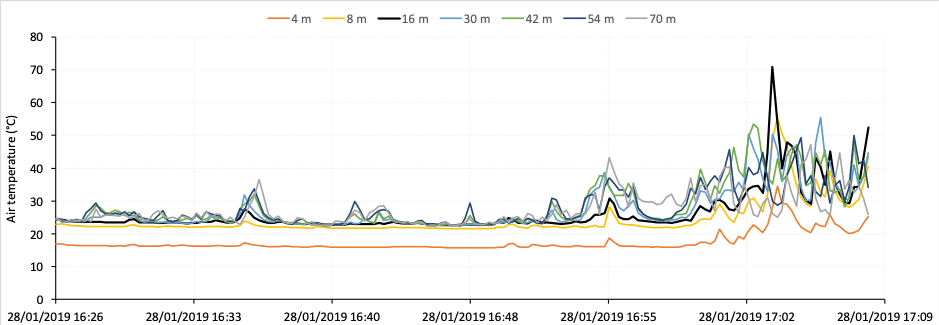The full extent of devastation following the recent bushfires in Tasmania is becoming clear. This is what our worried researchers found when it was finally safe enough to visit TERN’s highly instrumented, long-term ecological research site in the Huon Valley. The site burnt and infrastructure was destroyed but the event has offered up a great opportunity to augment the decades of data collected so far and look at the effect of fire—one of the most important processes in carbon cycling—for an important Australian ecosystem.
It was Sunday, 20 January and Tim Wardlaw of the University of Tasmania (UTAS) sat nervously, constantly checking updates on the Tasmanian Fire Service website as bushfires slowly surrounded TERN’s Warra Tall Eucalypt SuperSite—one of Australia’s longest running long-term ecological research (LTER) sites and part of the International LTER network (ILTER).
On Wednesday, the prognosis was surprisingly positive with the fires closest to the Warra SuperSite being kept under control by water bombing and high fuel moisture levels.
“The forest seems like it’s wet enough to restrict the fires to a smoldering, slow spread,” reported Tim in a remarkably positive early email. As a precaution, debris and vegetation around the site’s flux tower were cleared by fire authorities.
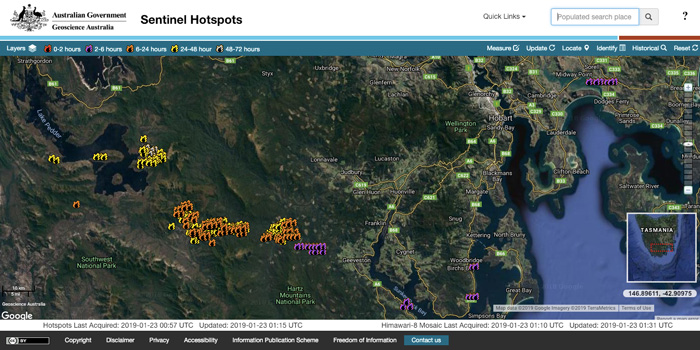
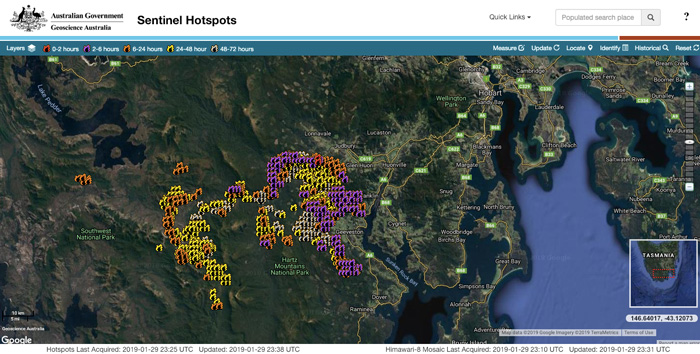
Fire scorches Tasmania’s oldest forest research site
The smoke finally cleared on Wednesday 6 February and helicopter captured images confirmed the tower remained standing. Tim was safely able to visit the landscape he’s been working at for over 20 years on 11 February, but when he got there it wasn’t the lush wet eucalypt forest he was used to.
“The fire had consumed much of the surrounding understorey and scorched crowns of the eucalypt and blackwood overstorey,” reported Tim.
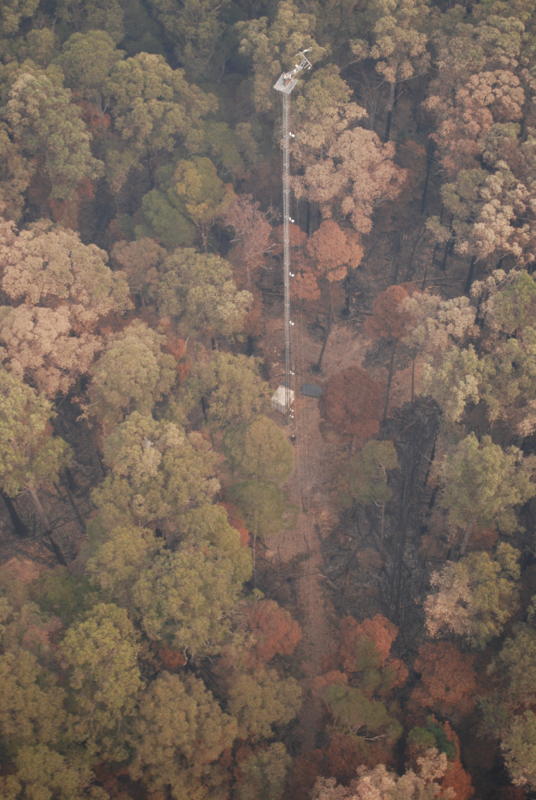
The tower was still standing and thankfully most of the instruments survived. But down on the ground, inspections revealed a sorry story. Soil sensors, destroyed. Dataloggers, multiplexers and a time-domain reflectometer, either melted or irreparable. Power and communication cables melted. The site’s acoustic recorder; melted beyond recognition.
As well as the SuperSite, the fires had also burnt three of TERN’s smaller 1 ha ecosystem surveillance plots ha plots and the TERN Landscapes remote sensing calibration site.
Two other long-term experiments—the Silvicultural Systems Trial and the Wildfire Chrono-sequence Plots—being conducted at Warra by TERN’s partners Sustainable Timber Tasmania and UTAS Warra were also impacted by the fire.
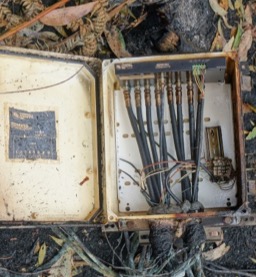
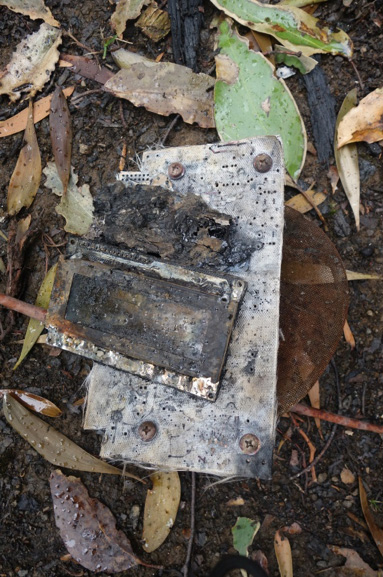
A weatherproof enclosure housing a multiplexer showing evidence of exposure to extreme heat (left) and all that remains of the acoustic recorder (right) (images courtesy of Tim Wardlaw)
Valuable data rise from the ashes
Despite the destruction and subsequent large sum of money and effort required to get things going again, the event has offered up a great opportunity to augment the decades of data collected so far and look at the effect of fire—one of the most important processes in carbon cycling—for an important Australian ecosystem.
“The burnt research sites, including the TERN LTER site and 1 ha plots, and numerous other vegetation and biodiversity monitoring plots scattered in the landscape, will provide useful baseline data to assess fire impacts and ecosystem recovery,” says Dr Sue Baker, a research fellow in forest ecology and conservation biology at UTAS.
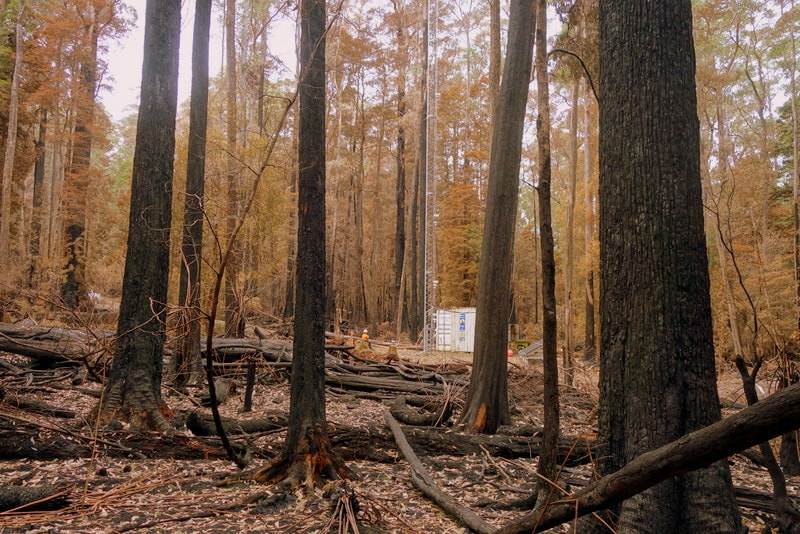
“Wildfires provide an ideal natural benchmark to assess the impacts of forest management on biodiversity,” says Sue. “But, there hasn’t been a wildfire in this landscape since 1967 so we’re keen to use this opportunity to do some post-fire research to tie in with the biodiversity studies that have been going on at the site for the last twenty years.”
Preliminary analyses of the data collected by the site’s flux tower during the fires indicate that there were several spikes in atmospheric concentrations of CO2 and that around 10 tonnes CO2 per hectare was lost within a few hours during the passage of the fire.
“The data from the flux tower during the fire event are very rare globally and may challenge some of our assumptions about carbon losses during fires” adds Tim, the Principal Investigator at the Warra SuperSite.
As the data comes online via the TERN Data Discovery Portal it’s reassuring to think of the exciting ecosystem studies that will surely rise from the ashes.
- Click here to learn more about TERN research infrastructure at Warra, Tasmania.
- Keep an eye out in future editions of the TERN eNewsletter for updates on the recovery of TERN’s Warra LTER site.
